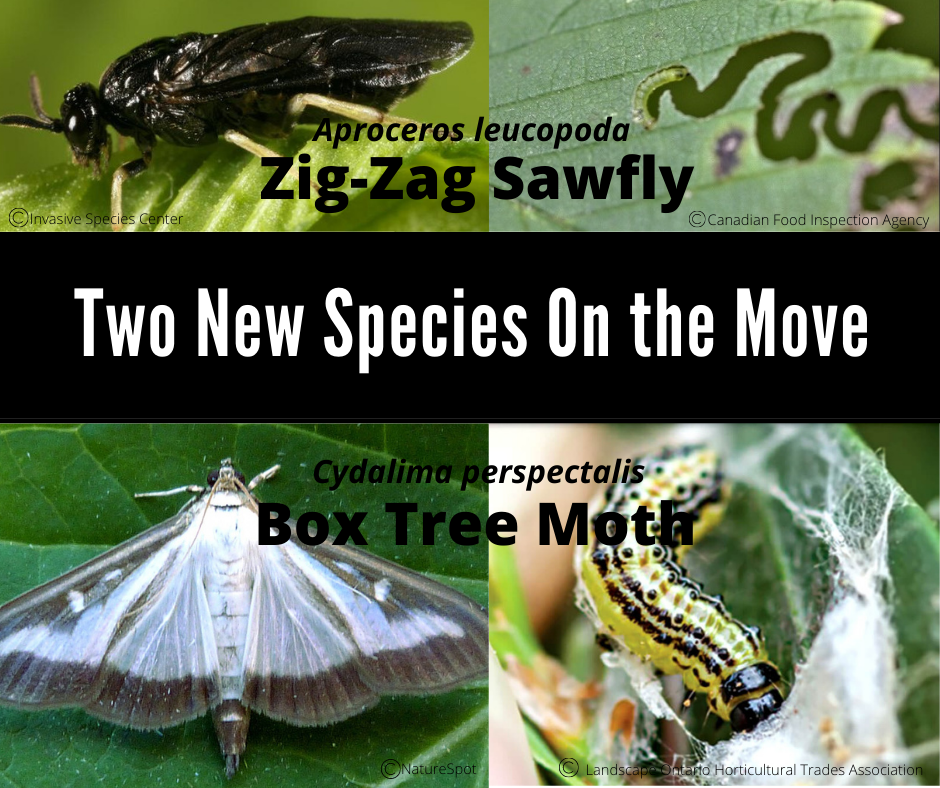This article was featured in the 2021 Summer Newsletter, contributed by Megan Pistolese & Rob Williams-SLELO PRISM.
Elm Zigzag Sawfly (Aproceros leucopoda)
Our partners at NYS Ag & Markets have informed us that we have a new contender on its way from the north that will likely pose an additional threat to the health of our state’s American Elm populations which according to the NY Flora Atlas, are established in all but three New York counties. The contender is the Elm Zigzag Sawfly (EZS) Aproceros leucopoda, which is a new invasive species to North America, named after the zig-zag feeding pattern of the larvae.
This insect can cause significant branch die-back and crown thinning, weakening the trees and causing increased vulnerability to other pests or pathogens. Elms in a variety of habitats, including arboretums, botanical gardens, roadside trees, urban plantings, and natural woodlands are susceptible.
There is a possibility of organizing a Volunteer Surveillance Network for this pest, but first, we need to locate elm tree stands in the SLELO region. If anyone knows of elm stands that have easy access, please reach out to Megan.Pistolese@tnc.org and include the subject “elm stands.”

Box Tree Moth (Cydalima perspectalis)
On May 26th, the Canadian Food Inspection Agency (CFIA) had confirmed the presence of box tree moth in a St. Catharine’s, Ontario, Canada nursery. The box tree moth is native to Japan, China, Taiwan, and the far east. According to the literature, the larvae are voracious defoliators of Buxus and are considered a high-consequence defoliating pest of boxwood, with other possible hosts. If you think you have found this moth, be sure to take quality close-up photos and contact Thom Allgaier with NYS Agriculture and Markets at, Thomas.Allgaier@agriculture.ny.gov.



